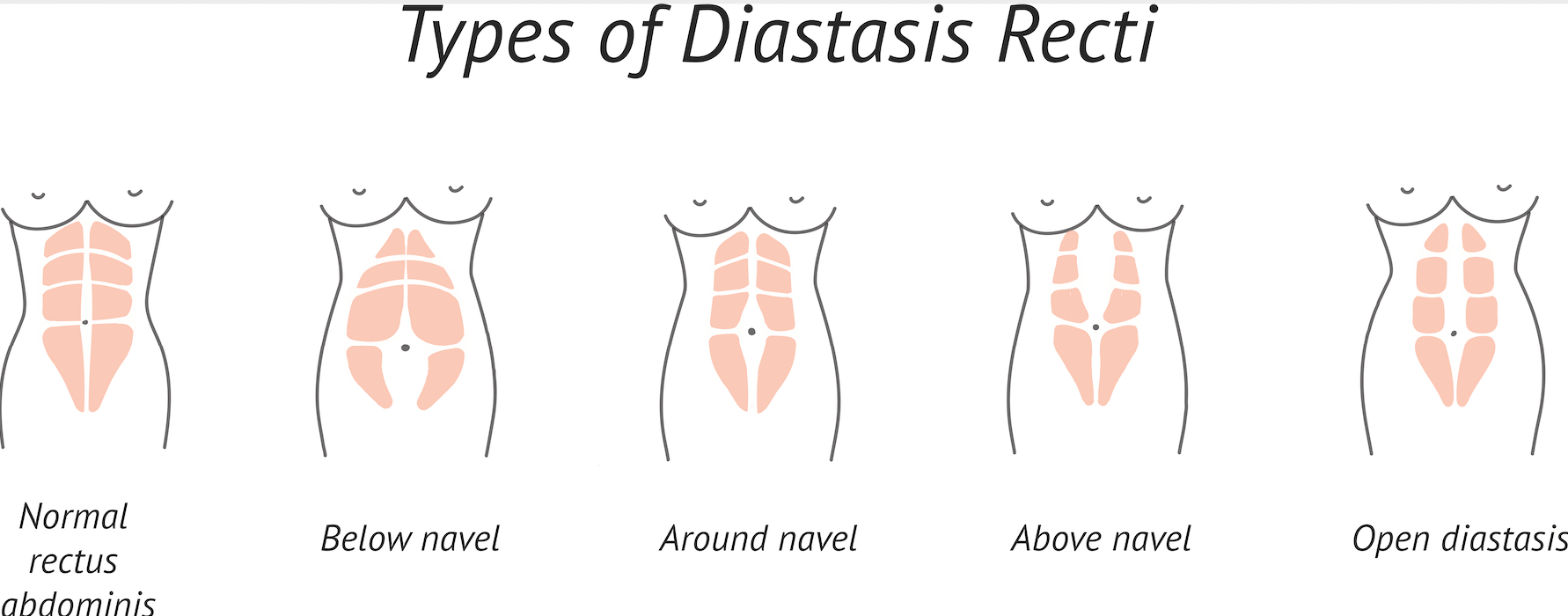
Diastasis Recti Abdominis (DRA)
What is Diastasis Rectus Abdominis?
DRA is a common condition that affects many women during the childbearing years. As a fetus grows within the uterus, the uterus expands, which places stress across the structures surrounding it, specifically the muscles. The primary abdominal muscle on the front side of the body is called the rectus abdominis. This muscle is divided into a left and right half by a thick band of connective tissue called the linea alba. You may hear people talk about “6-pack abs”; this is referring to the rectus abdominis. As the uterus expands, stretching across the rectis abdominis and muscular changes in the trunk, secondary to postural changes, weight gain, and joint laxity can eventually result in diastasis recti.

DRA may affect women during and after pregnancy. Sixty percent of women will develop diastasis recti in the third trimester of pregnancy. It is during this time that the fetus is growing most rapidly, and when the pelvic floor and rectus abdominus muscles are most prone to becoming overstretched and stressed.
There are several factors that may make a woman more susceptible to developing DRA. These include age, being pregnant with multiple children (multiparity), and having many pregnancies. The abdominal muscles have many important functions within the body, including postural support, movement, breathing, and protection of the internal organs. Therefore, if their structure is affected by DRA, a woman may have difficulty controlling her posture, which may put her at an increased risk for injury. Additionally, for a woman juggling the many stresses of having a new baby, the discomfort, weakness, and changes to postural control that may result from DRA can negatively affect her quality of life.
During your DRA evaluation we will be educating you on postural training, myofascial release, spinal mobilization, stretching and bracing to reverse your DRA symptoms.
Zarina Vitebsky, DPT, PRPC, has developed a 7-step protocol over her 20+ years of experience that has been 98% successful in addressing all functions of DRA.
Are you ready to live pain free?
Request An Appointment